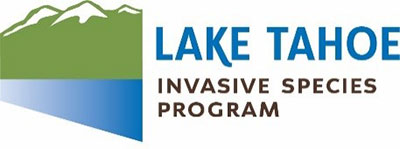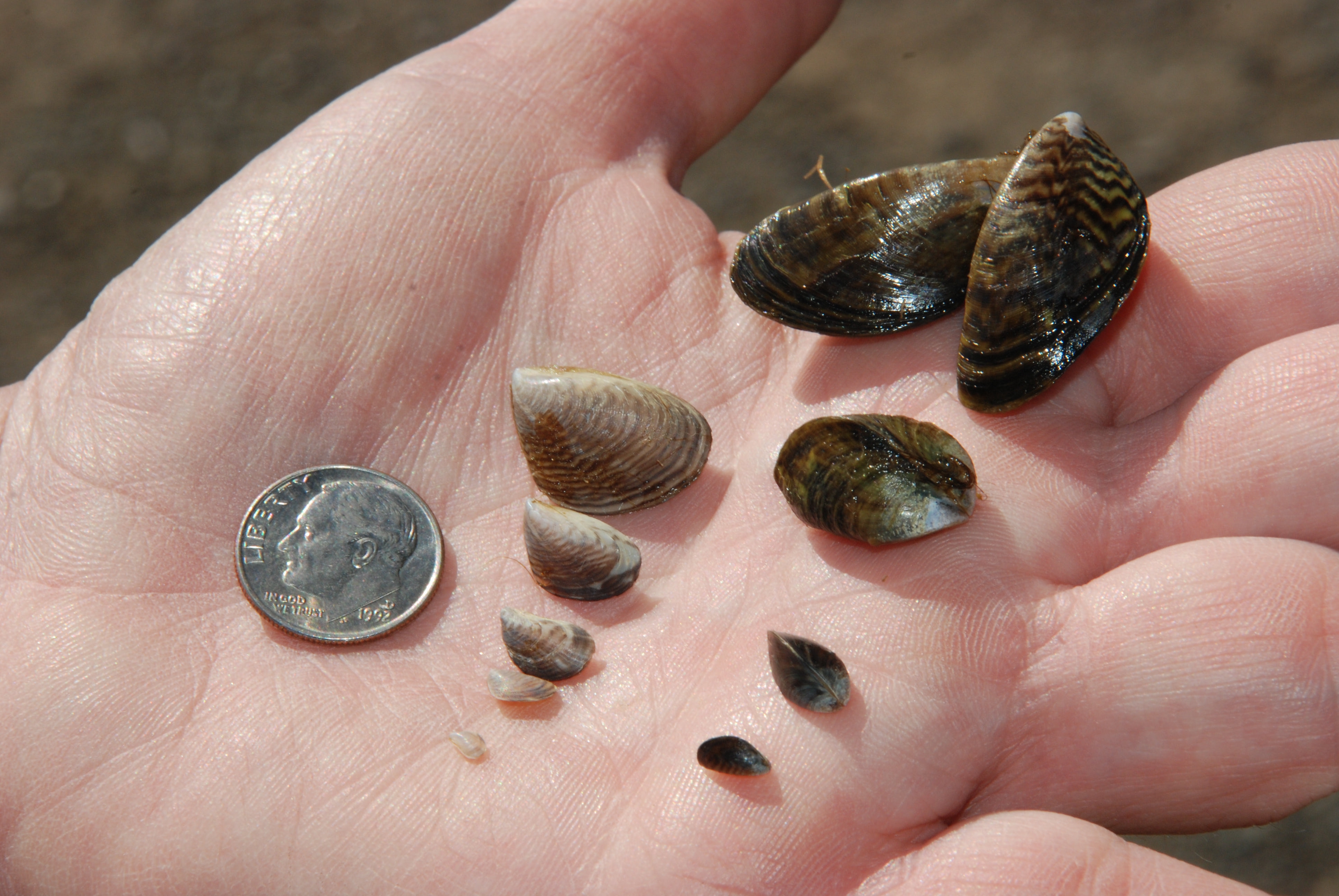
Quagga mussels (Dreissena bugensis) in hand for size comparison.
This year marks the tenth anniversary of Lake Tahoe’s Watercraft Inspection Program. Under the program, every motorized watercraft is inspected to ensure it is clean, drained, and dry and not carrying aquatic invasive species before launching at Tahoe. Thanks to diligent boaters and watercraft inspectors, no new aquatic invasive species have been detected in Lake Tahoe since the program began 10 years ago.
Of the nearly 8,000 vessels watercraft inspectors examined this boating season, 44 percent of them arrived clean, drained, and dry. Eleven watercraft were found carrying invasive mussels and 40 were harboring other species.
This exemplifies the excellent work by the inspectors, but also that watercraft continue to be a vector of aquatic invasive species. Each fouled vessel was decontaminated prior to launching in Lake Tahoe. The largest number of decontaminations occur on vessels containing standing water, which may contain unwanted seeds, plant fragments, or microscopic larvae.
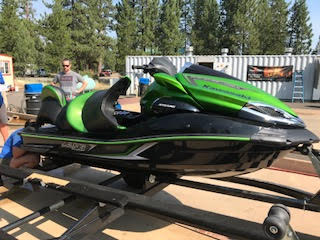
Quagga mussel found on a personal watercraft at the Spooner roadside inspection station on July 18, 2018.
Boaters are encouraged to continue to be a part of the solution by cleaning, draining, and drying their vessel before launching in any waterbody. This includes both motorized and non-motorized watercraft.
This July, Tahoe Resource Conservation District (Tahoe RCD) watercraft inspectors intercepted a pontoon boat harboring multiple aquatic invasive species of concern. An inconspicuous crack in the pontoon allowed water and vegetation to enter, and several invasive species then grew within.
The boat came from Eastern United States and was inspected at the Alpine Meadows watercraft inspection station on Highway 89 in California. Staff discovered standing water, adult quagga and zebra mussels, aquatic vegetation, New Zealand mudsnails, and multiple other species inside the pontoon system. After discovery of the invasive species, inspectors coordinated with California Department of Fish and Wildlife and performed a full decontamination of the vessel to kill and remove all invasive species.
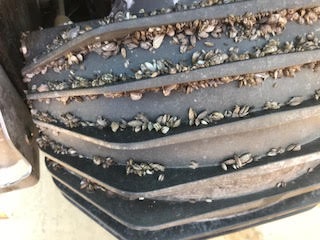
On July 18, the reverse bucket of the personal watercraft was found to have attached adult quagga mussels.
“This incident is the perfect example of how boats are the number one transport mechanism for aquatic invasive species,” said Christopher Kilian, program manager at the Tahoe RCD. “This is a good reminder that you could unknowingly transport invasive species and highlights the importance of being diligent when practicing Clean, Drain, and Dry techniques before travelling to a new location.”
“They may hide on the hull, in your bilge, on your anchor, in your ballast system, or in this case: inside a pontoon. We’d like everyone to keep this in mind as they travel to other waterbodies or prepare for inspections.” All watercraft are required to be inspected prior to launching in Lake Tahoe.
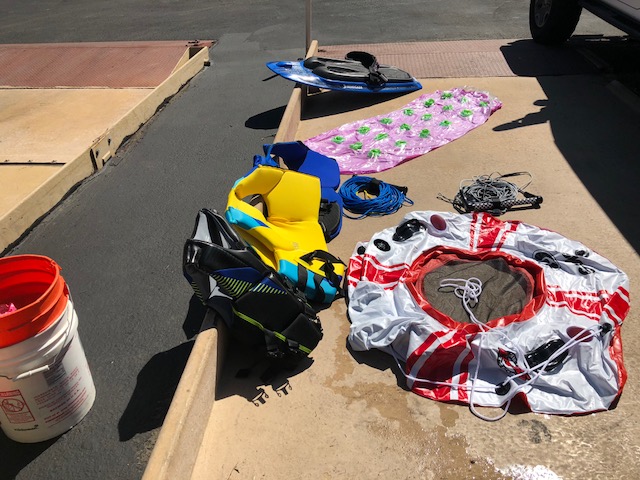
When quagga mussels are found on board a boat, the decontamination process includes a hot water (140 degrees Fahrenheit) wash of all toys, life jackets, skis, wakeboards, anchors, and lines.
As fall approaches, boat inspections will move to select launch ramps and winter hours will begin on October 1. Tahoe Resource Conservation District (Tahoe RCD) inspectors will be stationed at Cave Rock and Lake Forest boat launch ramps from 6 a.m. to 4 p.m. seven days a week, weather permitting. All boats without an intact Tahoe inspection seal are required to get an inspection during daylight hours.
Decontaminations are available at Cave Rock and Lake Forest throughout October as weather permits. Decontamination fees will apply for watercraft that are not clean, drained and dry. Watercraft that has been in a known infested waterbody will require a precautionary decontamination at no cost regardless of whether it has been cleaned, drained, and dry. Boats with intact inspection seals are permitted to launch at all open launch facilities; however, inspections are only available at Cave Rock and Lake Forest boat launch ramps. Boaters are encouraged to confirm hours and inspection locations at TahoeBoatInspections.com or by calling 888-824-6267.
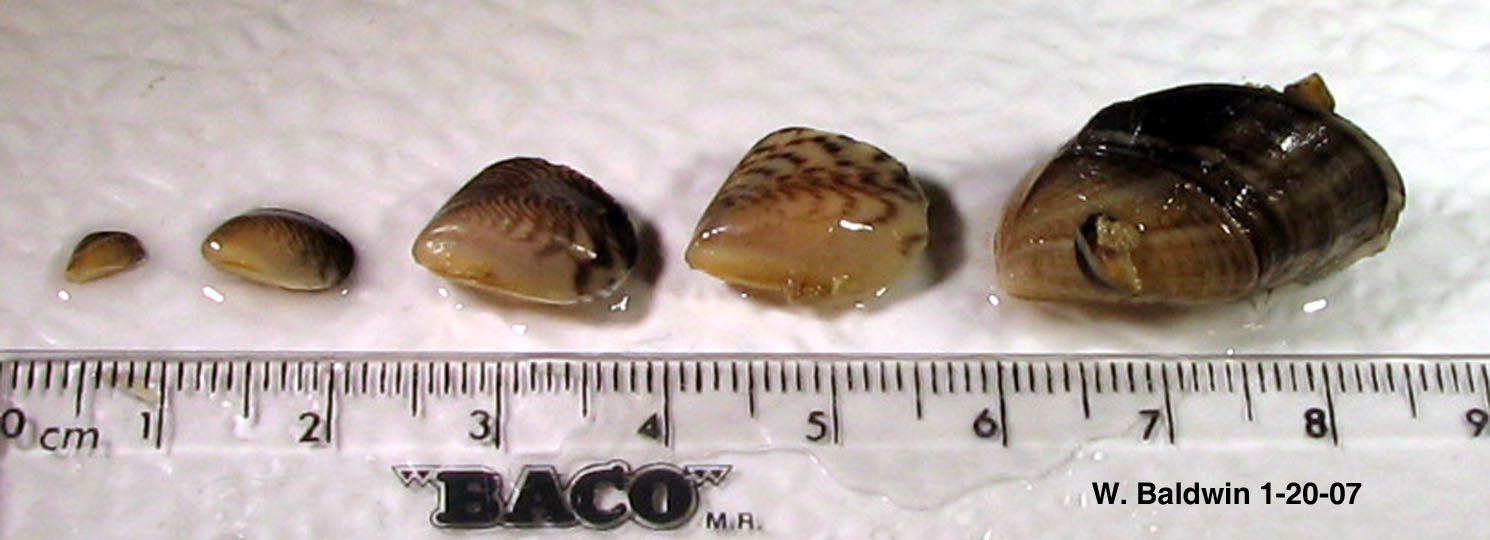
Quagga mussel size scale in inches. Adult quagga to the far right has smaller mussels attached to exterior of shell.
A new invasive species introduction in Lake Tahoe could have devastating impacts. Without natural predators, invasive species multiply quickly and can colonize the lake, as well as docks, water pipes, filtration systems, piers, ramps, and boats. They destroy fish habitat, impair boat engines, and negatively impact water quality and recreation, thus posing serious threats to the ecology, recreation, infrastructure, and economy of the Lake Tahoe Basin.
___________________________________________________________________________________________________
To learn how to clean, drain, and dry your vessel and prepare for a watercraft inspection, please visit www.TahoeBoatInspections.com.
Please note that the Truckee Watercraft Inspection Station is closed for the season. The other three stations will remain open through September 30, 2018.
For non-motorized watercraft preparing to boat in the Lake Tahoe Region, please visit www.TahoeKeepers.org to learn more.
